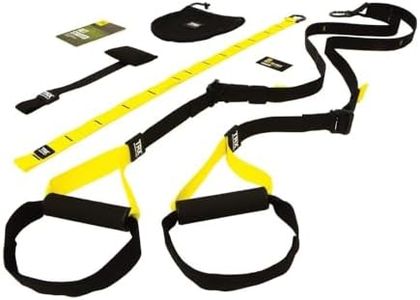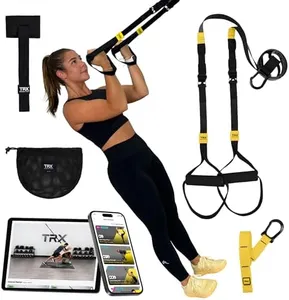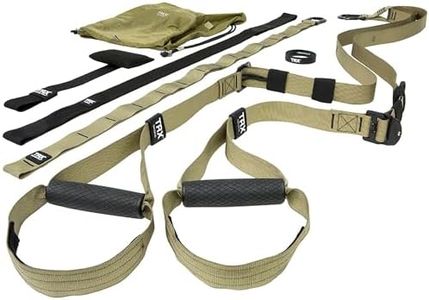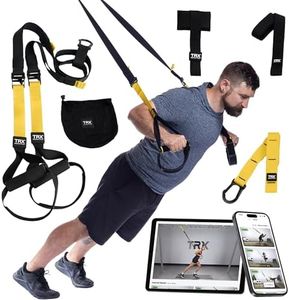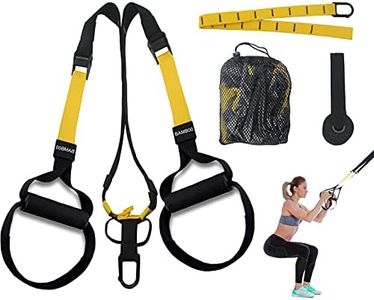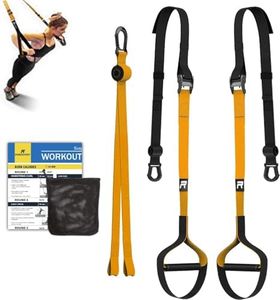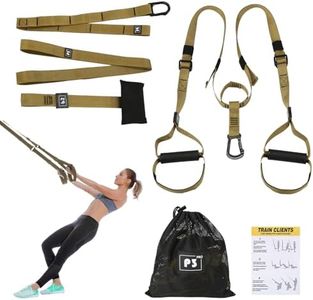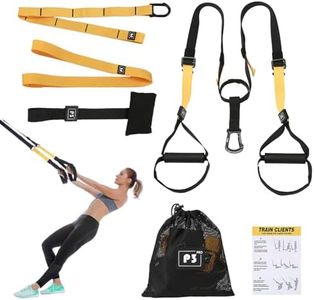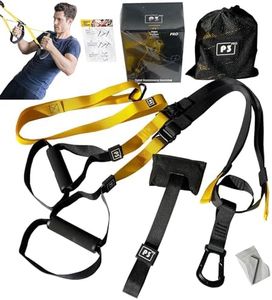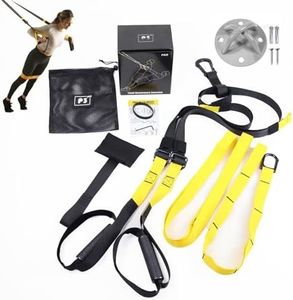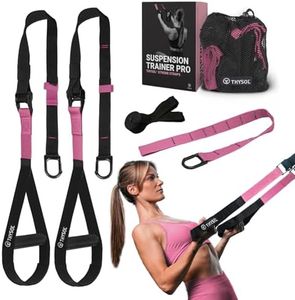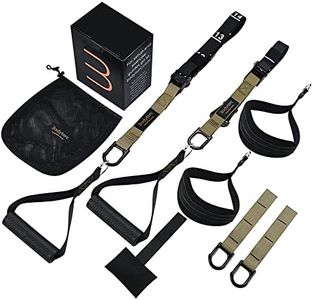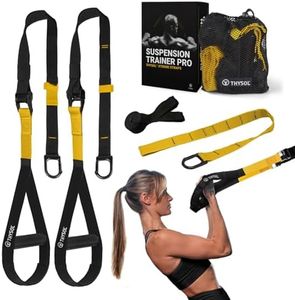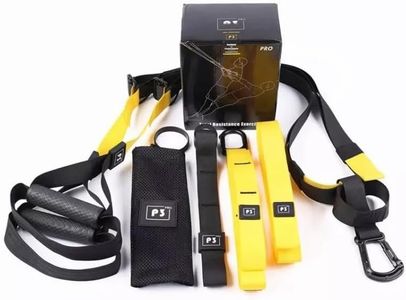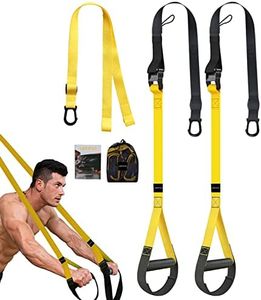We Use CookiesWe use cookies to enhance the security, performance,
functionality and for analytical and promotional activities. By continuing to browse this site you
are agreeing to our privacy policy
10 Best Suspension Trainers
From leading brands and best sellers available on the web.By clicking on a link to a third party's website, log data is shared with that third party.
Buying Guide for the Best Suspension Trainers
Suspension trainers are a versatile piece of fitness equipment that use your bodyweight and gravity to perform a wide range of exercises. They’re great for strength, flexibility, and stability training, and can be easily used at home or taken on the go. Choosing the right suspension trainer involves understanding a few key factors that impact their safety, comfort, and how well they suit your workout style. Knowing what specs to look at can help you pick a trainer that fits your needs and goals.AdjustabilityAdjustability refers to how easily you can change the length of the suspension straps. This spec is important because it affects the variety of exercises you can do and allows you to switch quickly between moves or users of different heights. Straps that adjust easily with hiqh-quality buckles or mechanisms are more user-friendly. Some trainers offer precise, quick adjustments, while others require more effort or only adjust to certain lengths. If you plan to do a wide range of exercises or share the trainer with others, look for highly adjustable straps.
Strap Material and DurabilityThis spec covers the material and build quality of the trainer’s straps. Strong, reinforced webbing is crucial because it must support your bodyweight safely over time. Some trainers use higher-grade materials with extra stitching and protection against wear, while others may feel flimsy or wear out faster. If you intend to use your suspension trainer frequently or want it to last for years, prioritize durability. Lightweight, basic materials may be fine for occasional or travel use, but for heavy users, robust construction is best.
Anchor OptionsAnchor options refer to how you attach the suspension trainer—either to doors, beams, or outdoor structures. This is important for safety and versatility. Some suspension trainers come with multiple anchor options, allowing you to use them in different places like home, gym, or outdoors, while others are limited to certain anchor types. Consider where you’ll use your trainer most often: a versatile anchor system lets you train anywhere, but if you only plan to use it at home on a sturdy door, a simple door anchor may be sufficient.
Handles and Foot CradlesHandles and foot cradles are the parts you hold or put your feet into. Their shape, padding, and build affect comfort and grip during workouts. Chunky, ergonomic handles with padding are more comfortable, especially during longer sessions. Some cradles are adjustable for users with different foot sizes. If your workouts include a lot of pushing moves or you have sensitive hands, look for padded handles. If you want to do leg exercises, make sure foot cradles are secure and comfortable.
PortabilityPortability describes how easy it is to carry and store the suspension trainer. If you travel frequently or want to work out in various locations, lightweight and compact trainers are better suited to your lifestyle. Some kits come with a carrying bag, while others do not. If you’re only using it at home, portability might not matter as much, but for those who like exercising outdoors or travel often, a portable, compact kit will be more convenient.
Maximum User WeightThe maximum user weight is the highest weight the trainer can support safely. This ensures the equipment won’t fail during use. Suspension trainers come with ratings that generally cover most adults, but heavier users should pay close attention to this number. Always choose a trainer with a higher weight capacity than your current weight to allow for dynamic movements and safety margins. If multiple people of different sizes will use the trainer, use the heaviest user as your reference point.
